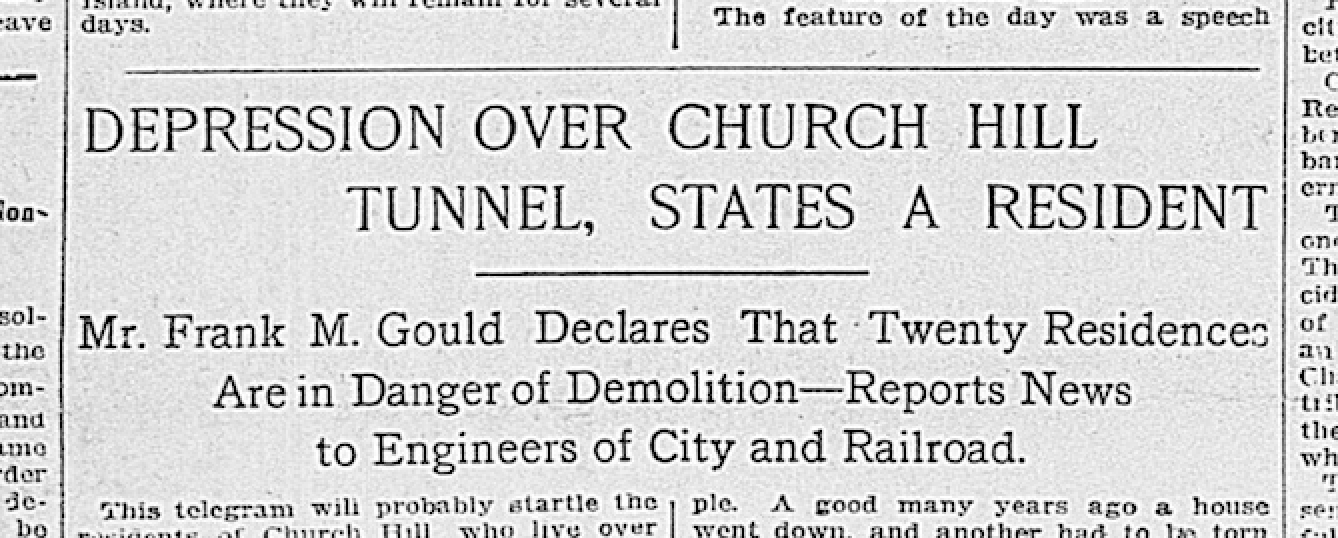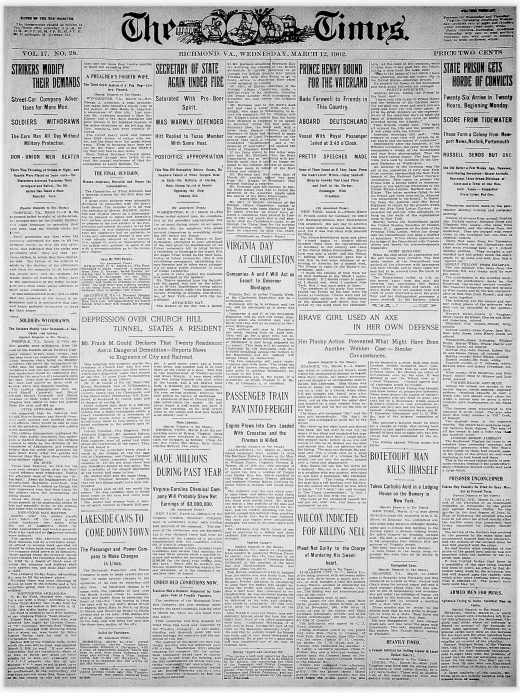The Church Hill Tunnel runs from just east and north of the intersection of Cedar Street and Marshall Street, under Jefferson Park and Marshall Street, to a point just south of 31st and Grace Street.
[sep]

[sep]
The Chesapeake and Ohio Railway broke ground for the tunnel on February 1, 1872. During construction, a section of ground near 24th Street above the tunnel dropped 20 feet “carrying several unoccupied houses with it.” The Church Hill Tunnel was completed in December, 1873.
The tunnel saw regular use for 28 years. After completion of the riverfront viaduct in 1901, the Church Hill Tunnel was relegated to standby use and was later put out of service in 1915.
The article embedded below is from March 12, 1902, dating from just after the tunnel fell out of regular use – and 23 years before the eventual collapse.
In 1925, the railroad began efforts to restore the tunnel to usable condition to add capacity. On October 2, 1925, a collapse near the western end of the tunnel trapped a work train. Engineer Thomas Joseph Mason was killed, two other workers were unaccounted for, and Fireman Benjamin F. Mosby died hours later due of the burns caused by the ruptured boiler.
Engine #231 and 10 flat cars remain in the tunnel.
[sep]
[sep]




17 comments
FB_10209734991303980
FB_1799722120266626
FB_10202520247683271
FB_1106561096121810
FB_10211100487525176
FB_10155169406678153
FB_1680589281967563
FB_750656008416288
FB_1206119449424292
FB_10202774018268175
FB_10154097195273021
Such great history!
With tunneling technology improved so much over the last century and so much more vehicle traffic, I think it makes sense to consider redoing the Church Hill tunnel.
I love the whole front page which also mentions the trolley system adding a line from lakeside to downtown, and more prisoners being brought into the old penitentiary, which used to be across from Oregon Hill.
That would be a good idea and think they even gave that a consideration at one time for Civil Defense, as a fallout shelter, but it never happened.
With the old age of the tunnel, and engineers thinking that the trapped groundwater that fills it is stabilizing the ceilings which could collapse when drained, it could cause structures to fall off their foundations, or worse. I am sure there is a lot of liability risk factors involved when digging under buildings in a 100+ year old unmaintained hole.
The last time I visited the East End fire station on 24th Street, the Captain showed me a wall that keeps cracking on the building where it sits over the tunnel.
I’ve seen several maps of the tunnel, all of which have a slightly different routing. It would be interesting to use some type of sonar technology to accurately map it.
Why Haven’t they used ground penetrating radar to see what condition the train is in